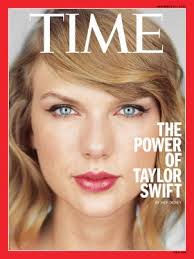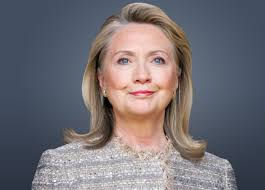What Should Hillary Clinton Learn From Taylor Swift’s Social Media Genius?
- Alejandra Ramirez
- May 29, 2015
- 5 min read
This article will discuss the unique social media strategies from Taylor’s Swift’s campaign in connection to the concepts discussed in our social media communications course. It aims to provide a comprehensive perspective of the practices of social media management from the Swift’s team in attempt to suggest a similar approach to Clinton’s upcoming presidential campaign in 2016. I would like to focus on the concepts of authentic engagement and reciprocal listening developed by the author Kate Crawford in Following You: Disciplines of listening in Social Media (2009).

I would like to start by saying: YES, I am fan. And proudly so. I belong to the wide and vast pop culture fan communities that look up to Taylor Swift and follow her in multiple platforms of social media. I don’t need to spend a lot of time making a case for her unparalleled success in the music industry and as a social media personality. Nevertheless here are a few facts: Taylor has made it to the one hundred most powerful people in the world by Forbes magazine this week. She has also received honours from TIME magazine and RollingStone. Taylor is one the most followed celebrities in social media with millions of followers in Twitter, Instagram and Facebook. Her new single, Bad Blood has recently brake the 24hour record on VEVO video sharing site.

People have praised her over and over again for her unique marketing strategies and celebrity practices. So as students of social media communication Swift’s case study should be revealing and carefully analyzed. There is so much content to discuss that this short article would not fit it all. Therefore, I have chosen a few concept strategies I consider most appealing in answering the question above.
Let’s commence:
1. Anticipation. One of the most unique strategies from Taylor Swift’s approach to social media is her ability to create anticipation prior to the launch of an album or the release of a single. She is clever in using the affordances of social media in order to create momentum amongst her followers. What is interesting about this particular aspect of her campaign is that this momentum created online has repercussions offline. For example: she uses social media tools to give her audience clues of what the new release is about, via pictures or short videos. Then the traditional press builds on these online activity by publishing a magazine article about it or creating a short clip in the news. We could argue that Taylor’s campaign starts online with new media, and continues off line with traditional media. She is a good example of the convergence discussed by Henry Jenkins of both of these world’s, traditional and new media. (Jenkins, 2006)

2. Creativity and co-creation. Taylor’s fans are a great example of active participation online and remix produsage. There are numerous sites from fan communities that re-produse her songs, lyrics, pictures in the forms of blogs, videos, mashups, memes etc. This is a phenomenon itself worth studying with more attention. The volumes of content are impressive and the subcultures within itself are numerous. I have selected my favourite findings here, see below. We have discussed the concepts of user created content in our class based on the works of Axel Bruns. Taylor Swift’s case study offers good examples of the tensions between pro-amateurs and professionals. It also illustrates the tensions regarding copyright infringement. After watching these videos produced by fans I found difficult to determine, first: if these produsers were amateurs or professional; and second: if its distribution infringes any laws. Nevertheless, I’m personally impressed by their quality and audience response. It is also interesting to observe the interactions of fan communities or better called: “swifties”. The truth is that in social media communications we observe the interaction between the entity and the audience but we also observe the interaction between fans and other fans. These conversations are revealing in understanding our audience. Clinton’s campaign must leverage these affordances of social media and listen to these conversations carefully.
Shake it off Disney version.
https://www.youtube.com/watch?v=XorCG9p_nP4
Bad Blood video with half of Hollywood.
https://www.youtube.com/watch?v=QcIy9NiNbmo
List of fan clubs. (impressive!)
https://www.facebook.com/notes/taylor-alison-swift-updates/taylor-swift-update-accounts/1060653127296677
Twift daily. All her twits and interactions daily.
https://twitter.com/tswiftdaily13
Tay Text. BY FAR my favourite. This is an app where you can finish your texts with lyrics to her songs. App developed by Harvard students.
http://time.com/3849486/taylor-swift-lyric-text-app/
3. Authenticity. Swift’s fans rave consistently about how approachable and authentic Taylor’s persona is perceived. This is truly an important element in creating a successful campaign. Both of our guests at our twitter seminars elaborated on these concepts. Jennifer Lam suggests we must stay authentic in building our brand personalities and in the content we create; Vanessa Peach encouraged us to stay faithful to the values of the brand. We can argue that followers can be passive participants but they are certainly not stupid. Followers do recognize when a politician or a celebrity is portraying a facade. I believe there is a certain degree of tolerance for the politician that is obeying rules of communication or campaigning protocols, but the audience will eventually recognize an authentic aura versus a fake facade. Crawford discussed this idea by saying “ When a politician’s face and name are connected to an online profile which is clearly being used as a public relations arm by unknown staffers, it evokes something akin to ventriloquism- a pretence of presence, or a consultation puppet show”. (Crawford, 2009, pg 530). Crawford argues that politicians failed to establish an authentic online persona because they are not responding the their constituents in the form of direct replies or comments using Twitter, for example. She defends the idea of reciprocal listening: the concept of being heard and hearing others; in other words paying attention to your followers. I expect Clinton’s campaign to consider this in the coming elections.
4. Engagement. Taylor Swift’s engagement skills in social media platforms are unequivocally what sets her apart from other celebrities. She has really redefine the relationship between fans and stars. There are multiple examples of this: from her private fans parties to her long comments and direct messages; from her Christmas gift campaign to her Instagram reposts. She listens, replies, engages and engages again! She has helped people believe that the connection between the audience and the Star is possible.
The presidential campaign of 2016 will be exciting for students of new media. There has been significant growth in the field of social media and audience participation since 2012. Platforms such as Instagram and Twitter have grown considerably in size and membership. While Facebook continues to maintain its leadership as the biggest platform of all.
Some of the social media dynamics amongst users have also changed. The use of memes, for example was not as prevalent back in 2012. These small, cropped, edited imagery is important in the sphere of social media content, in that it has big shareabilities qualities. In other words it has large potential for proliferation and reach. The use of memes and other forms of content during the campaign will allow the public to follow the collective conversation and it could affect the way constituents vote.

I’m looking forward to see Hillary Clinton’s campaign utilize social media tools effectively. A well-planned social media strategy could redefine the relationship between candidates and voters. Especially if Clinton’s engagement is authentic and consistent. It could increase voters participation. Passive and non registered voters that are active online could engage a political discussion or simply learn more about the candidate’s proposals via Twitter or Instagram. Overall, social media tools have the potential to enhance democracy.
I look forward to see Hillary Clinton become the first women president of the United States and (of course) have Taylor Swift sing at her Inauguration.
References:
Jenkins, H. (2006). Convergence culture: where old and new media collide(Chapter 3: Searching for the Origami Unicorn: The Matrix and Transmedia Storytelling). New York: New York University Press.
Crawford, Kate. ‘Following You: Disciplines Of Listening In Social Media’. Continuum 23.4 (2009): 525-535. Web.
Bruns, Axel. Blogs, Wikipedia, Second Life, And Beyond. New York: Peter Lang, 2008. Print.










Comments